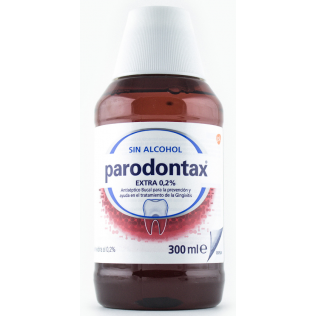 View larger
View larger COMPOSITION
Aqua ; sorbitol ; glycerin ; peg-40; hydrogenated castor oil ; aroma ; mica ; chlorhexidine digluconate
CONSERVATION AND DACITY
Keep below 25oC
CONTRAINDICATIONS
Do not use in patients who have previously shown hypersensitivity reaction to chlorhexidine or other ingredients.
These reactions are extremely rare.
FUNTION
It is especially indicated in cases where there is excessive formation of bacterial plaque that can result in tooth decay, in the prevention of acute and chronic gingivitis, as well as in periodontitis or rapid progression.
It helps to maintain proper oral hygiene when dental brushing cannot be done properly, either by oral surgery, orthodontic treatments, or by bleeding gums resulting from inflammation of the gums.
It acts accurately in the interdental spaces where the brush does not arrive, eliminating the bacteria causing the dental plate, protecting teeth and gums.
EMPLEMENTATION MODEL
Use adults and children over the age of 12.
Carefully rinse the mouth twice a day from 30 to 60 seconds with 10 ml without diluting (filling the container up to the dosing line),
After brushing your teeth, clear your mouth with water to completely remove the remains of the toothpaste before using the collutory
To prevent denture stomatitis, these should be washed and then immersed for 15 minutes twice a day in the product
Children aged 6 to 12 should not use the product except on the recommendation of a health professional.
PRECAUTIONS AND WARNINGS
Just for oral use.
Wash abundantly with water if you come into contact with your eyes or ears.
Don't swallow. Chlorhexidine can leave a bitter taste. Do not rinse your mouth immediately after using the product as this can increase the bitter taste.
In the case of using this product to wash dentures, be sure before the inflammation is not produced by a bad fit of the teeth.
Stop using the product and immediately consult the doctor if you have irritation or swelling on your lips, tongue, throat or face or if you have difficulty breathing. These effects can be symptoms of a severe allergic reaction, which is very rare.
After prolonged use, colouring of the teeth and fillings may occur in contact with certain drinks and foods such as coffee and red wine, as well as tobacco. This colouring is not permanent and can be largely avoided by brushing daily with a conventional toothpaste before using the preparation, or in the case of prosthesis by cleaning them with a conventional product. In some chaos there may be changes in taste that decrease with the continued use of the product.











